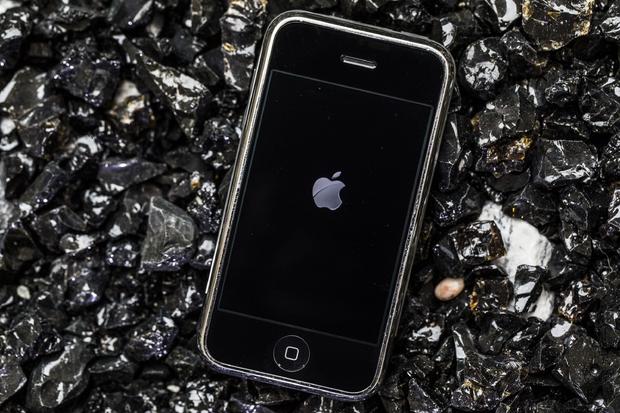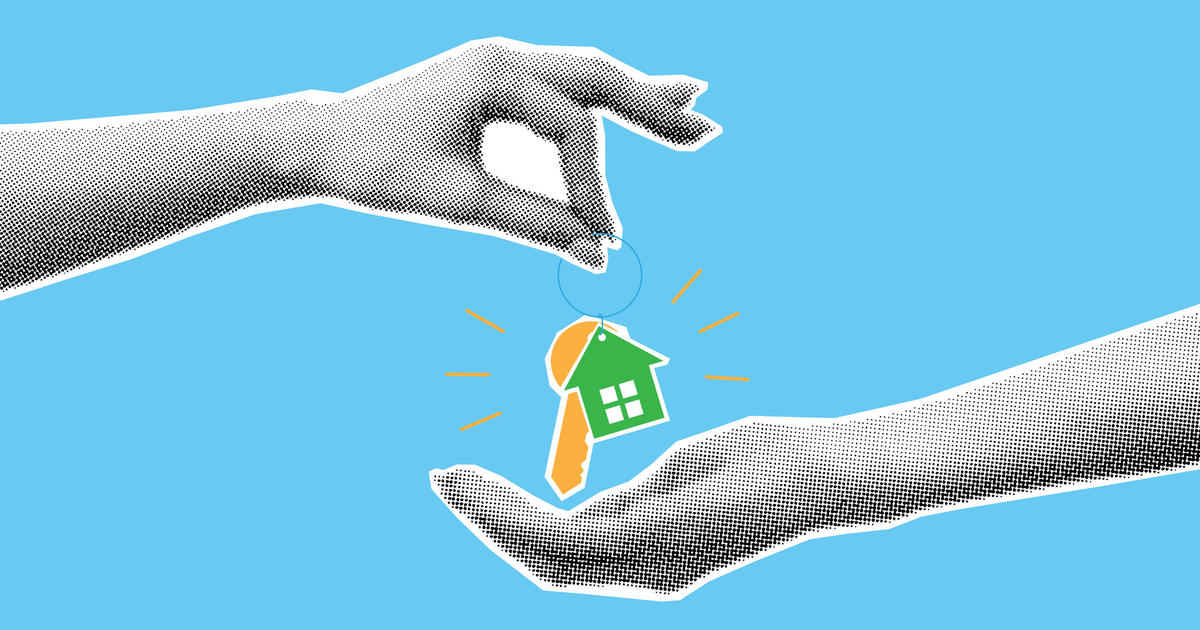Apple's iPhone turns 10: Where does it go from here?
Happy birthday, iPhone. You’re 10 years old! What do you want to be when you grow up?
When Steve Jobs unveiled the first iPhone 10 years ago today, he touted Apple’s ability to combine three products -- “a revolutionary mobile phone, a widescreen iPod with touch controls, and a breakthrough internet communications device with desktop-class email, web browsing, searching and maps -- into one small and lightweight handheld device.”
Those characteristics are still in today’s iPhones, but they’re so much more. Think over 2 million apps more, changing everything from the way we commute to the way we communicate with family and friends. At the same time, it has spawned hundreds of copycats and created new industries that couldn’t exist without phones. The iPhone is the most successful consumer device ever created.
So where does it go from here?
For Apple, the next 10 years will be about refining and simplifying its hugely popular phone. Whether the iPhone remains a rectangular slab of glass for the next decade is anyone’s guess (or, rather, up to chief designer Jony Ive). Importantly, what will become an even bigger focus will be everything else that surrounds the iPhone, like virtual reality and smart home.
“iPhone is an essential part of our customers’ lives, and today more than ever it is redefining the way we communicate, entertain, work and live,” Apple CEO Tim Cook said in a statement posted in Apple’s online newsroom. “iPhone set the standard for mobile computing in its first decade and we are just getting started. The best is yet to come.”
Here are some of CNET’s predictions:
Simplicity
iPhones used to celebrate just doing a few things well. Now, iOS and the iPhone are endlessly complex. Settings and hidden Easter eggs lurk everywhere. Managing cloud storage and photos, or navigating notifications and privacy will send you down rabbit holes.
Apple could aim for simplicity once again, paring down the experience to something more essential. It might find a way of pushing only a few things to your attention while keeping the rest in the background. It needs to reinvent its design, even the software, to be less cluttered.
And then there are all the phones. There used to be one iPhone... now there are models in different sizes, colors and processors. One rumor has Apple offering multiple display types next year.
The reality of the phone market is Apple will have to continue to meet different budgets and lifestyles. There’s no going back to that single original iPhone.
Connecting to everything
The iPhone’s already a hub for our fitness trackers, the Apple Watch and a growing world of smart home appliances and connected gadgets. The latest version of iOS included smart home shortcuts built into the Control Panel, like a home-based remote control. Imagine more of that spreading across more devices and services.
It’ll be able to talk to other gadgets more easily. Bluetooth 5 promises greater range and higher speeds to connect to other peripherals. In a home, that could make a huge difference. A wild card could be Wi-Gig, an extremely high-bandwidth, short-range variation of Wi-Fi that could be a path to how future iPhones could mirror instantly to larger screens or accessories.
Deeper AI
Amazon Echo opened the door. Talking to your gadget is now awesome, not annoying. Siri, however -- which lives on nearly all Apple devices -- is still problematic. It’s not as responsive as Amazon’s Alexa or as intuitive as Google Assistant. It should do more and understand context better.
A more ambient, helpful iPhone is a necessary next step. Consider Assistant and how it lives on Google’s Pixel phone, ready to help. iOS 9 takes a few steps there, but expect Apple to continue knitting together apps and services with AI and machine learning.
The interesting twist is the company’s emphasis on doing its computations on-device, instead of in the cloud. That’s a completely different approach than Google and Amazon, one rooted in privacy. Apple’s latest Photos app smartly organizes photo libraries by faces and places and automatically knits together memory-reel trailers around themes. Better Siri and smarter AI aren’t just what the iPhone needs; it’s what Apple needs across the board.
Totally port-free
We’re all sad about losing the headphone jack. What about losing the rest? MacBooks and iPhones have shaved down their inputs to just a few options in 2016. Next, perhaps, comes Lightning.
Charging, for iPhones, still happens via the Lightning cable. Contactless charging -- the type that has been available for Android phones for years, and is used by the Apple Watch, hasn’t arrived yet. But when it does, perhaps in the iPhone 8, that Lightning cable will be a lot less necessary.
We already can transfer files locally via AirDrop or stream via AirPlay. It would be shocking if Apple followed up a headphone jack-free iPhone 7 with a completely closed-off iPhone 8, but someday there will be an iPhone that flirts with going full wireless.
All-screen
The iPhone still has bezels, areas of the front of the phone where the screen doesn’t extend. For instance, consider the area around the Home Button. Samsung’s recent phones have gone nearly edge-to-edge, and even wrapped the display around the sides. A bezel-free all-screen iPhone would fill up more screen space in a smaller size for an easier grip. Reports of Touch ID being integrated into the display would mean you’ll just touch a part of the screen to log in or pay.
The cloud, the cloud
Apple’s relationship with cloud services feels overcomplicated. Google and Amazon offer lots of free storage and syncing options. With iCloud, paying for the right storage tier can get pricey. Relying on the cloud has become an answer for accessing files (there’s an iCloud Drive folder, now) and photos. But how do photos and videos get managed properly? Despite a growing number of alternative cloud-storage options, it’s hard to keep things organized properly.
Cloud services are what’s bringing Mac OS and iOS closer together, sharing iMessage, file storage, photos, Notes and Pages files. Cloud services like those from Google co-exist, sometimes beautifully, sometimes awkwardly. Phones are, more than ever, just small terminals to a huge connected system. The iPhone’s going to be increasingly dependent on the cloud.
AR and VR
Samsung has already turned its flagship phones into mobile virtual reality accessories via Gear VR. Google has the Daydream headset and its Cardboard initiative. Apple, however, has stayed quiet on VR.
Instead of thinking about a pair of phone-goggle accessories, consider the possibilities of a more advanced camera. Google Tango -- an augmented reality initiative under the same umbrella as Daydream’s VR -- uses depth-sensing 3D cameras to scan a room and help project imaginary things into it... or, track movement so that a VR headset could feel like it’s really mapping motion. Cook has stated his interest in augmented reality, which probably indicates that more advanced camera features could be where things go next.
Much like the iPhone 7 Plus can sense depth with its dual cameras, imagine more advanced cameras that can enable augmented reality like Google Tango. Then imagine that these cameras could do power tracking for a VR headset, like the Occipital Bridge. Maybe that’s way too much in the weeds for Apple, a company that seems to prefer sleek minimalism. But it’s a short jump for the iPhone to adopt AR or VR.
Moving past the phone itself
The biggest change in the iPhone of 2027 is that it may not be a phone at at, at least not in the sense of the device we know today. What could be more vital about mobile computing over the next decade is what’s around the phone. Apple already envisions the iPhone as the remote control for our lives; over the next 10 years, that remote will extend to things like VR and smart homes and cities.
And much like the iPod got obliterated, the iPhone may go the same way. Phones may work like Chromecasts, where devices pick up and stream based on what another tells it. Or the Apple Watch can serve as the key to tying connected devices together. Apple is already exploring cross-device communication; if your phone rings, so does your Mac or iPad.
“There’s at least one vision of the future where the phone as a discrete device goes away and turns into other interfaces like wearables,” Jackdaw Research analyst Jan Dawson said. Input, output and the brains of a product will be “less tied to a specific device over the years.”
This article originally appeared on CNET.com.





